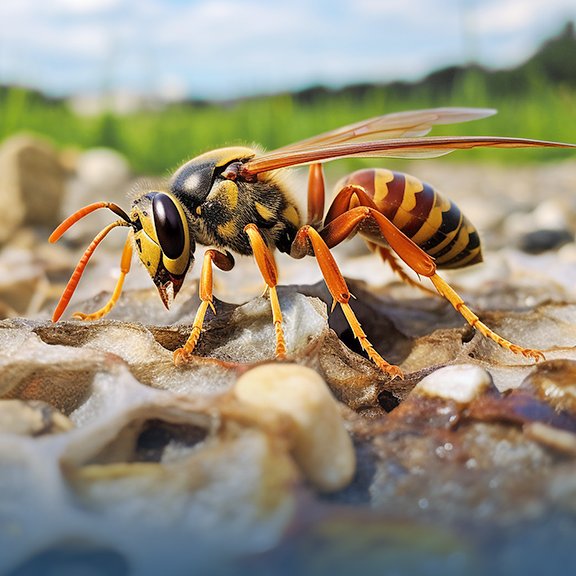Wasps & Yellowjackets
Yellowjackets are a specific type of wasp, and they’re among the most aggressive stinging insects encountered in back yards, parks, and outdoor eating areas. These insects are highly social and live in large colonies, often hidden underground or inside wall voids. While they do provide natural pest control by preying on insects, yellowjackets are also scavengers. They tend to gravitate to open garbage cans, meat, and sugary drinks. This tendency brings them closer to humans and increases the likelihood of stings - especially in late summer when food sources become scarce and colonies grow more defensive. Because yellowjackets can sting multiple times and do so with little provocation, they’re considered more dangerous than many other flying insects. Their stings can cause painful welts and, in some individuals, serious allergic reactions.
Are Yellowjackets Wasps?
Yes, a yellowjacket is a type of wasp - but not all wasps are yellowjackets. “Wasp” is a broad category that includes many different species, and yellowjackets are just one of the more familiar and aggressive members of that group. Yellowjackets tend to have compact, smooth bodies with a clearly defined waist and distinctive black-and-yellow striping. Other types of wasps, like paper wasps or mud daubers, typically have longer, thinner bodies with legs that dangle in flight. Some are brownish or reddish instead of bright yellow, and most are less aggressive than yellowjackets.
The Role of Wasps in the Ecosystem
Many wasp species are carnivorous, feeding on insects like aphids and caterpillars and helping to control pest populations. Some wasps are solitary, while others live in colonies and build paper-like nests, which they defend aggressively. Wasps help keep insect populations in check. Their defensive nature can make them more dangerous than some other pests, but they generally avoid humans and sting only when their nest is threatened.
Yellowjacket & Wasp Stings
Both yellowjackets and other wasps can sting repeatedly, and unlike bees, they do not lose their stinger in the process. Yellowjackets, in particular, are known for their quick temper and rapid response to perceived threats. Their stings inject venom that causes pain, swelling, and sometimes severe allergic reactions. Wasps like paper wasps are slightly less aggressive, but still capable of delivering painful stings when provoked. If you’re swarmed by stinging insects, avoid flailing or swatting, which can escalate the situation. Back away slowly and carefully, and go indoors if you’re able to.



